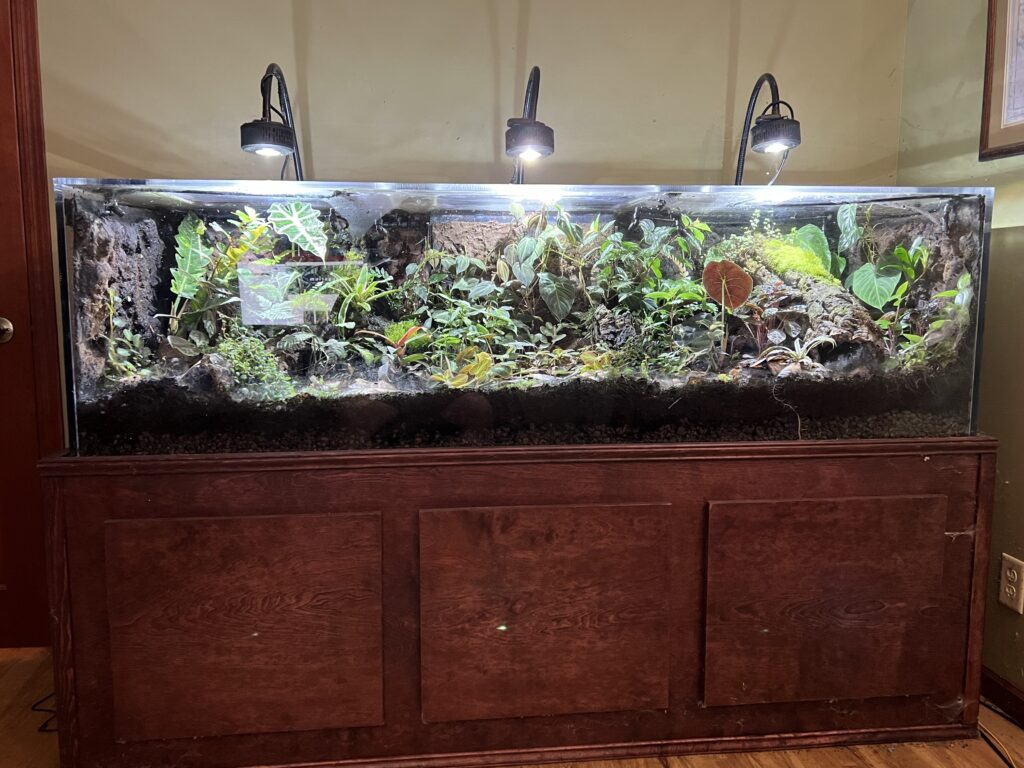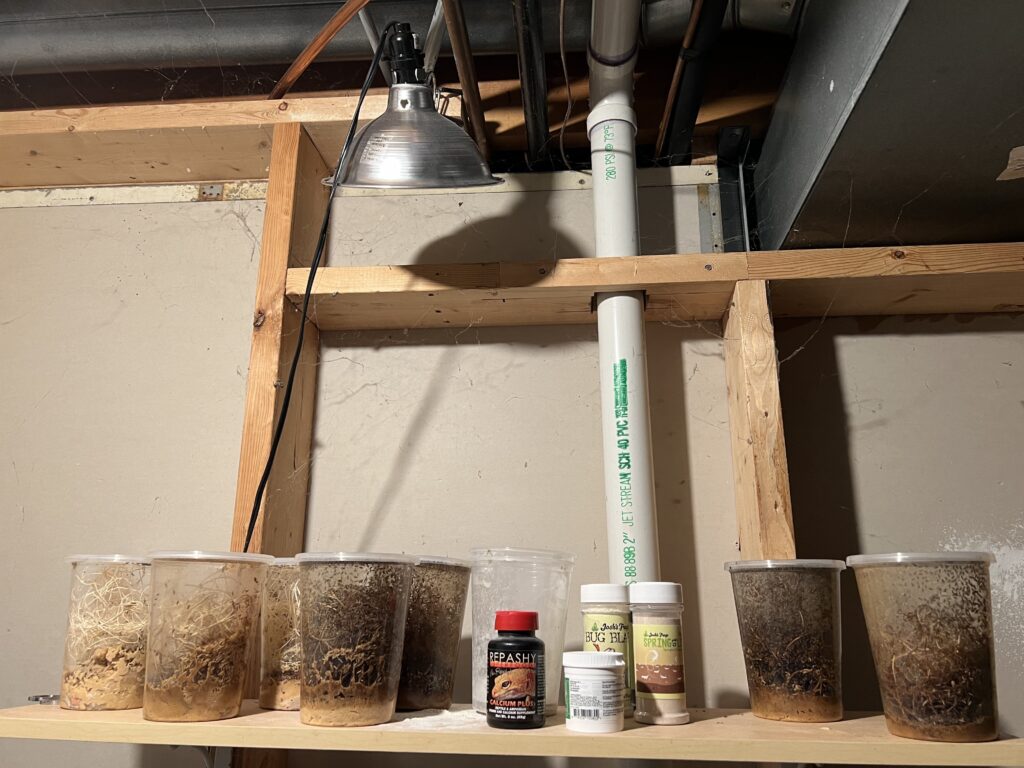Our vivarium
Vivarium is a Latin word that literally translates as “a place of life”. In the reptile and amphibian keeping hobby, it means providing an enclosure that focuses on using living elements and systems as the habitat that our animals will live in. In practice, this means that instead of using plastic plants and artificial turf, we’ll use live plants, soil, insects and supporting microfauna in our enclousure, in addition to the lighting, water and heating elements needed to care for the system as a whole.
From aquarium to vivarium

Our vivarium started with an older 125-gallon aquarium, measuring 6′ x 2′ x 2′. That’s nearly twice as large as the most spacious commercially available vivarium kit, or ready-made enclosure. While most of the references mentioned on the videos and links pages are still relevant and helpful, there are a few significant challenges.
Lighting and plumbing
The lights were reused LED fixtures intended for use on aquariums for freshwater aquatic plants, or saltwater coral. These are much brighter than the lights typically used for vivariums. What worked best was a daily program with much lower lows and higher highs than used in aquarium keeping. The system starts at 10% power but spends two hours in the middle of the day at 75%.
The documentation for the pump and misting system adequately covered use cases for larger systems. It did not, however, address mounting the internal nozzles and water lines in an acrylic aquarium. After several failed attempts to adapt the mounting hardware provided in the kit, I ended up using strips of indoor/outdoor velcro with an adhesive back to mount the nozzles and secure the water lines. This worked well enough.
Little frogs in a big box
The breed of dart frog I selected isn’t particularly social; they can behave aggressively with strangers or new additions to the system. I started with a group of five froglets. Only two or three are likely to be out at any given time, and spotting them can be a challenge. Adding more now that the community is established seems risky, so I wish I’d started with a larger group.
Feeding time
I’ve had several friends express interest in starting a vivarium of their own. The plants and frogs are great fun, and the time and effort required aren’t prohibitive. What invariably causes second thoughts are the feeding requirements.
Frogs eat flies
Several strains of flightless fruit flies are available as feeders for the poison dart frogs. Breeding any of these strains of flies requires careful planning. A started colony won’t produce usable amounts of flies for about 2-3 weeks, and will then be active for a little less than a week. This means that a feeding supply needs to be planned weeks in advance, including overlap to provide for contingencies if a colony fails or underproduces.
All that said, the process is very straightforward. The hobbyist can simply mix fruit fly media (mostly food) with hot water, place it in a well-ventilated cup, add some straw, and then find a tight-fitting lid. That last part about the lid is important.
Tiny flies in an enormous box
The challenge unique to larger enclosures is that just as the frogs spread out to use the whole six-foot space, so do the flies. This means that to provide the frogs with enough readily available food, the hobbyist will need to provide significantly more flies than would be necessary for a more enclosed feeding space. Care sheets for poison dart frogs typically recommend around 10-15 flies per day. I’ve found that I need to provide more than 40. This means we provide roughly 200 flies three times per week.
That’s a lot of flies.

O
